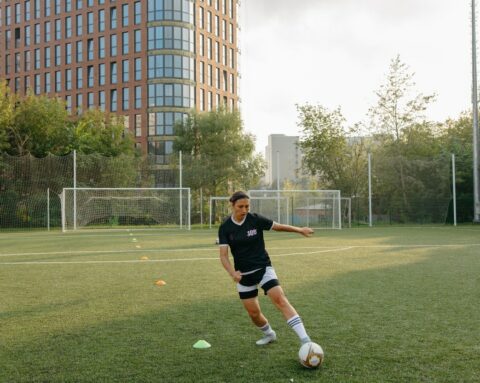Spondylolysis is a pars stress fracture, also called a non-displaced stress fracture of a vertebra. It is a common cause of back pain seen in young adults and children.
Symptoms:
Common symptoms associated with Spondylolysis are:
– You experience an aggravation of the injury by arching or standing.
– Sharp unilateral back pain that dulls over time
– You may feel pain radiating at the buttocks
– You will experience an easing of pain when you rest
– You may notice tight hamstrings and an arched back
Cause:
The cause of spondylolysis is usually due to activities that have many repetitive rotations or hyperextension movements that can cause a stress fracture.
It is also commonly caused by activities that over-stress the pars interarticularis. This is commonly seen in sports such as weightlifting, butterfly swimming, cricket, diving and many others.
There are two very distinct age groups where Spondylolysis tends to occur. This is largely due to the stages of skeletal development that occur at these times.
1. Spondylolysis will often occur in early adolescence, particularly in active sportspeople whose bone structure is still developing.
2. Spondylolysis will often occur in early childhood, particularly as the child is learning to walk or stand.
The condition is also far more common in males than females.
Diagnosis:
Your spondylolysis is confirmed through diagnostic scans of your spine. Bone scintigraphy is used to differentiate spondylolysis from a chronic defect. MRI and CT scans are commonly used to assess for spondylolysis
You may also undergo a physical examination where you may find pain as you extend your spine or in the lower back. Hamstring tightness is also commonly observed in people with spondylolysis.
Treatment:
When treating your spondylolysis you will notice that initially a conservative approach is taken to ensure that your pain is reduced and that the healing can begin. The next phase will safely ensure you progress toward an exercise-based strengthening of your hip core muscles and abs.
Your myotherapist will tailor a specific exercise program that suits your needs and lifestyle! One of the main reasons that people who suffer spondylolysis seek treatment is due to the pain. This is usually due to bone marrow inflammation so your myotherapist will focus on this in the early phases
There are many treatment techniques that are effective for spondylolysis such as, soft tissue massage, the use of braces, acupuncture, de-loading taping techniques and others.
One of the best ways to assist your initial treatment is to avoid inflammation as much as possible. Inflammation is generally caused by movements that cause you pain such as extension. Your myotherapist will provide you with the techniques suitable for your specific injury, body and general activity load.
When treating Spondylolysis your myotherapist has many methods that can assist in the right situation. One commonly used option for treatment is hydrotherapy or relaxed freestyle to aid in the early stages of repair. By recovering in the water the lesser bodyweight allows for more movement without pain and to maintain fitness levels.
After the swelling and pain have settled, your myotherapist may try to mobilise the stiff joints adjacent to your injury to restore your range of motion, posture and joint health.
Return To Activity:
To ensure you are rehabilitated to the fullest our final stages will aim to safely return you to your previous daily activities. Your treatment will be tailored to your specific exercise load and needs.
Your myotherapist will utilise their knowledge of demands in your competition as well as biomechanics to oversee your return to sport. In some cases this may involve adjusting your training methods and technique – this process is expected to take around 12 weeks or more.
Recovery:
Your spondylolysis will usually resolve its symptoms within 6 to 12 weeks. However, this is not always the case and can often take longer.
Thankfully, non-surgical treatments are a very successful option for spondylolysis with pain relief being successful in 80-85% of young adults and children with acute spondylolysis. Reoccurrence is, however, high in individuals who do not address the root cause of the injury.
Will My Spondylolysis Recur?
Unfortunately, spondylolysis is a condition that is likely to recur if you over-stress your lower back. This is usually due to insufficient rehabilitation or poor muscle control. We can improve both of these factors by improving your core control and back mobility through self-management techniques. Working on this is the best method to ensuring you will safely return to your previous sport or activity level.
If the rehabilitation is successfully managed you will be able to return without back pain from spondylolysis. Exercise is a fantastic preventative and strengthening measure for spondylolysis!
Pilates in particular is a fantastic exercise option for recovery – particularly when the activity is guided by a trained professional such as your myotherapist. It is important to work with someone who has a strong understanding of spinal care. Thankfully, surgery for spondylolysis is very rare provided you are not suffering back pain without neurological signs.






